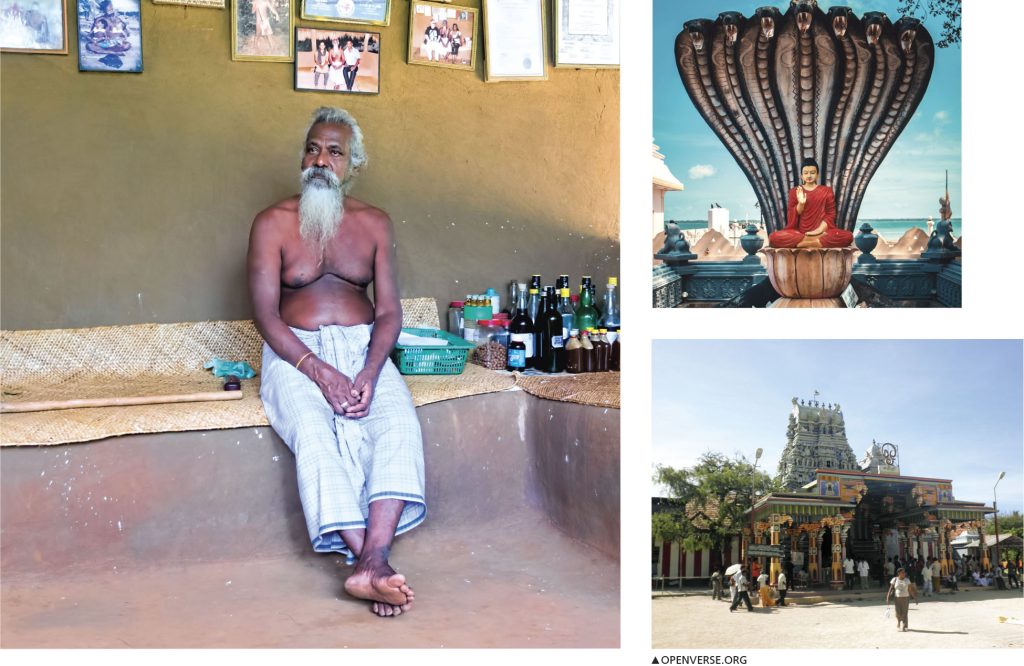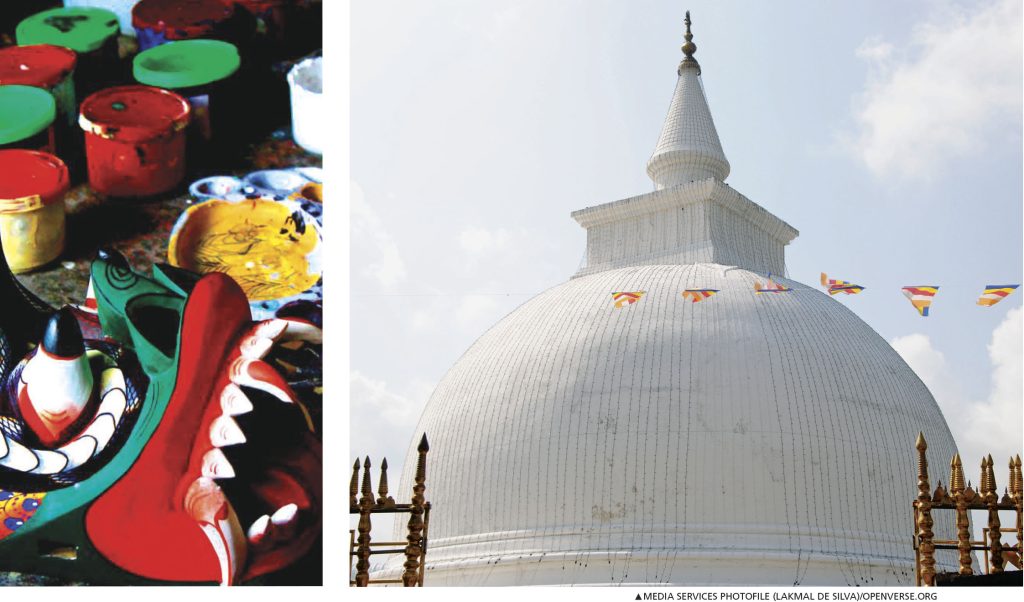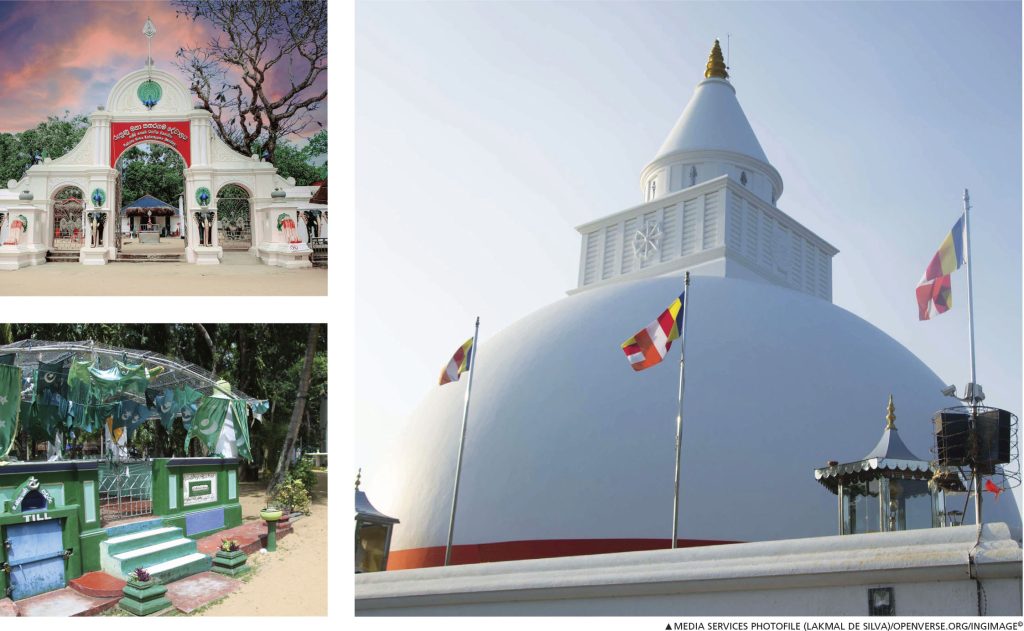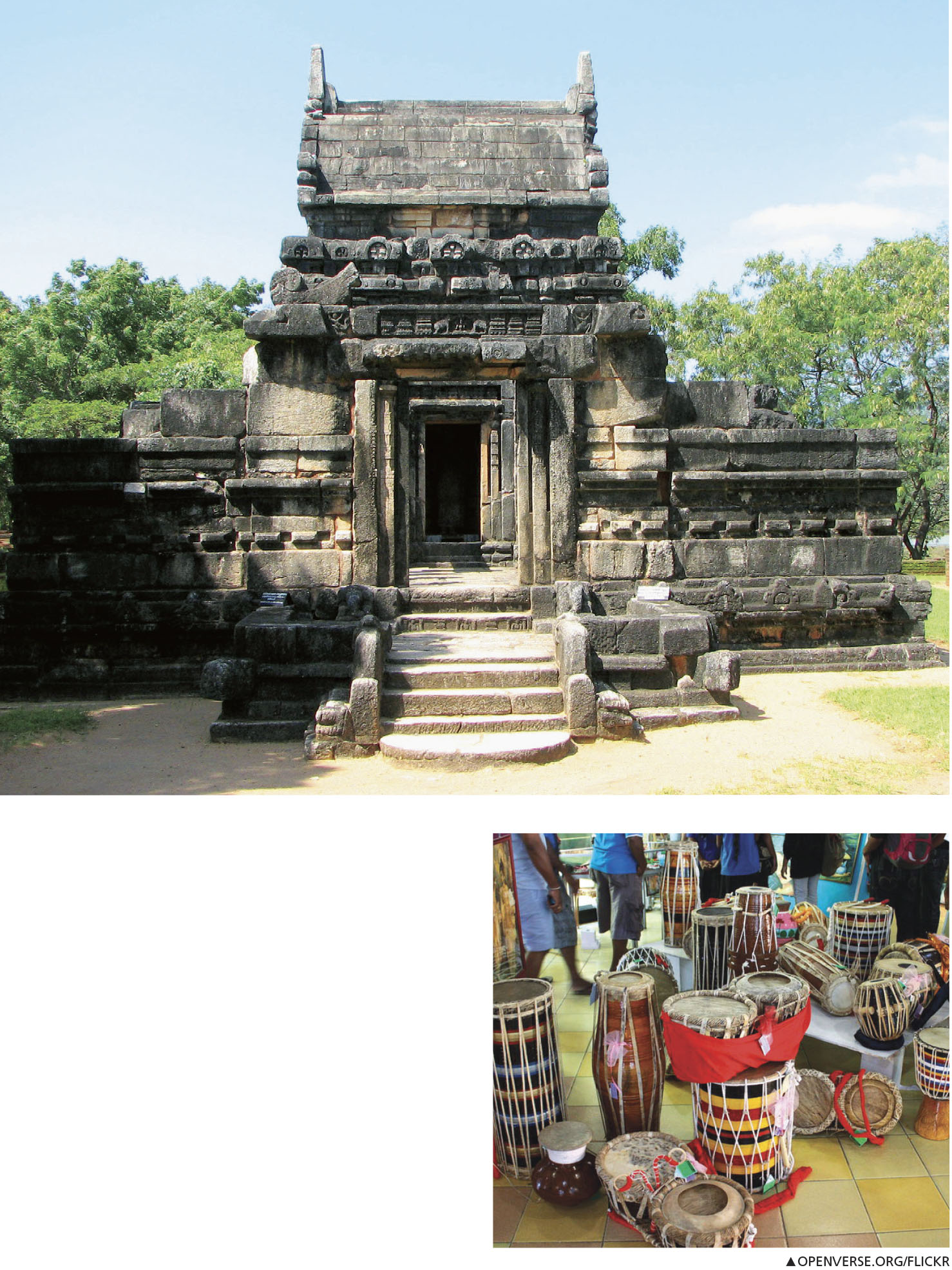HIDDEN CULTURAL GEMS
Sri Lanka is famed for its ancient cities such as Anuradhapura and Polonnaruwa. But beyond the well trodden tourist paths lie lesser known cultural destinations that offer glimpses into the island’s traditions, arts and spiritual life.
Here are some rare cultural sites where you can experience
authentic tradition and heritage…

HOME OF THE VEDDAS Deep in the Uva Province lies Dambana, a remote village that serves as the cultural heartland of the Vedda community – Sri Lanka’s last indigenous people.
With a lineage tracing back thousands of years, the Veddas’ way of life is rooted in nature and tradition. Visiting Dambana provides a rare and authentic glimpse into this fast disappearing heritage.
Accompanied by local guides, travellers can observe traditional honey gathering, bow hunting techniques and forest based living. Elders may chant ancient songs in the indigenous language and share stories passed down through generations. The community’s knowledge of herbal medicine and ritual dances, and their deep spiritual connection to the forest, reflect a sustainable lifestyle shaped by centuries of coexistence with nature.

CROSSROADS OF FAITH Off the northern coast of Jaffna lies Nagadeepa, an island steeped in centuries of spiritual reverence. This small yet powerful landmass is home to two sacred shrines: the Nagadeepa Purana Viharaya, a Buddhist temple believed to have been visited by the Buddha; and the Nagapooshani Amman Kovil, one of the 64 Shakti Peethas in Hinduism.
The two temples symbolise a rare and enduring harmony between Sri Lanka’s Buddhist and Hindu communities. Pilgrims travel from across the island to pay homage and take part in age-old rituals, pujas and festivals. The annual festival at the Hindu temple and Buddhist observances draw thousands who coexist in mutual respect.

TEMPLE FROZEN IN TIME Nestled in the quiet village of Maniyangama, the Maniyangama Raja Maha Vihara stands as a remarkable time capsule of Sri Lanka’s ancient Buddhist heritage.
Believed to have been established during the reign of King Valagamba over 2,000 years ago, this temple preserves age-old frescoes, stone inscriptions and a sacred Bodhi tree that locals say has stood for over a millennium.
Unlike many historical temples that have become tourist sites, Maniyangama remains integrated into the daily lives of villagers. The temple hosts annual peraheras, alongside bana sermons and other rituals that attract devotees from surrounding regions.
And its serene atmosphere offers visitors a rare chance to witness Buddhism practised as a living tradition.

SOUTHERN ROCK MONASTERY Deep within Yala National Park, amid wild terrain and roaming elephants, lies Sithulpawwa Raja Maha Viharaya – a monastic complex that once housed over 12,000 enlightened monks.
Believed to have been founded during the reign of King Kavantissa in the second century BC, this sacred site sits atop a rocky outcrop, offering views of the surrounding wilderness. The climb to the summit reveals ancient cave dwellings, Brahmi inscriptions and murals that depict early Buddhist life in southern Sri Lanka.
The serenity and natural beauty that envelop the monastery create an atmosphere of deep spiritual reflection, untouched by the bustle of modern tourism. Unlike the grand cities of Anuradhapura or Polonnaruwa, Sithulpawwa reflects the austere and meditative practices of forest dwelling monks.

THE ART OF MASK MAKING The coastal town of Ambalangoda holds a cultural treasure often overlooked by beach bound travellers – its mask making tradition.
This intricate craft is most vividly preserved at the Ariyapala Mask Museum and Workshop, where generations of artisans continue to hand carve and paint vibrant wooden masks using traditional methods.
The masks serve a purpose beyond their aesthetic beauty: they play central roles in folk performances such as Kolam (comic theatre), Sanni Yakuma (healing rituals for ailments) and Devil Dance ceremonies, which are steeped in Sinhalese mythology and exorcist rites.
Visitors can explore the symbolic meanings behind various characters and even try their hand at painting a mask.
LIVING PILGRIMAGE Located in Sri Lanka’s Deep South, Kataragama is a revered spiritual hub where Hindus, Buddhists and Muslims converge in shared devotion.
The town centres on the Kataragama Devalaya, dedicated to Skanda Murugan – a Hindu warrior deity also venerated by Buddhists as a guardian god. Nearby is the Kiri Vehera, a Buddhist stupa believed to have been visited by the Buddha and a mosque honouring a local Sufi saint, reflecting the area’s multi-religious harmony.
And the highlight of the religious calendar is the Kataragama perahera – a dazzling multi-day event filled with fire walking, kavadi processions, drumming and acts of penance performed by fervent devotees. Beyond the festival season, Kataragama offers a quieter soulful experience, where pilgrims offer fruit trays and chant prayers, and seek blessings in an atmosphere of spiritual intensity.
MYSTERIOUS SHRINE Tucked away in the central hills near Matale, Nalanda Gedige is one of Sri Lanka’s most enigmatic and architecturally unique sites.
Constructed entirely from stone, this ancient shrine dates to between the eighth and 10th centuries and exhibits a stunning fusion of Hindu and Buddhist architectural elements. Its ornate facade features intricate carvings of deities, floral patterns and symbolic motifs associated with Tantric worship, leading scholars to believe it may have served as a Tantric temple in a transitional religious era.
The inner sanctum and seated Buddha statue reflect Mahayana influences while the temple’s design mirrors South Indian Dravidian styles. Relocated in the 1980s due to a reservoir project, the temple now rests in a quiet isolated setting surrounded by forest and fields.
VILLAGE OF DRUMMERS In the hills of Kandy, the little-known village of Kuragala holds a powerful beat at the heart of Sri Lankan tradition.
Known for its drum making heritage, this rural hamlet is home to families who have for generations crafted and performed with traditional instruments like the geta bera, yak bera and davula – drums that are essential to temple rituals, peraheras and healing ceremonies across the island.
Artisans shape the drums by hand using jackwood and deerskin, passing their knowledge through apprenticeships and oral tradition. Beyond crafting, the village comes alive with the thunderous rhythms of ritual drumming, especially during religious festivals and full moon days, when sound becomes a sacred language of devotion.
Sri Lanka’s lesser known cultural destinations offer an immersive experience into its rich heritage where ancient traditions, art forms and spiritual practices continue to thrive.
From secluded monasteries to vibrant villages, these hidden gems make for a profound connection to the island’s diverse and timeless cultural landscape.
